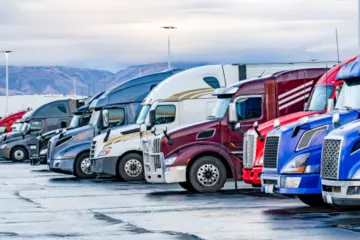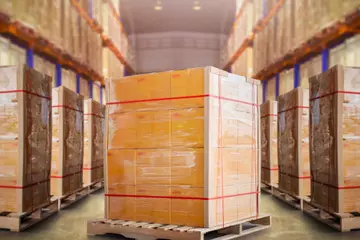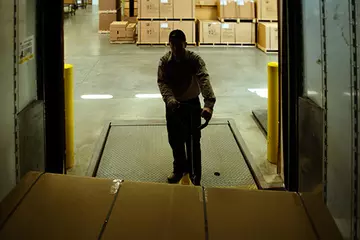Full truckload shipping 101
Full truckload (FTL) shipping is a familiar option for those in the transportation and logistics industry. However, grasping the full scope of what FTL entails can be challenging without the right information. By understanding all the details, you’ll gain insight into why it’s the go-to choice for many companies and how it helps businesses keep their supply chains running smoothly.

Defining the solution: What is FTL?
FTL, or full truckload, shipping refers to transporting one shipper’s goods in a single semi-trailer. Truckload shipping is ideal if there’s enough freight to fill at least half of the trailer, which commonly translates to more than seven standard pallets.
This solution has multiple benefits, including faster delivery and reduced handling compared to less-than-truckload (LTL) service.
How does it work?
Let's break it down into a few simple steps:
Step 1: Booking the shipment
If your freight is a good fit for truckload service, you’ll book the shipment through a carrier or a freight broker. This can usually be done online or over the phone. You'll need to provide details like the origin, destination, type of goods and any special handling requirements.
Step 2: Loading the trailer
Once the shipment is booked, the carrier will dispatch a truck to the origin location. The trailer is then loaded with your goods.
Step 3: Hauling the freight
Transit times can vary depending on the distance and unforeseen circumstances, but FTL generally offers faster delivery than LTL since it travels directly from origin to destination.
Step 4: Delivering the shipment
Upon arrival at the destination, the trailer is unloaded, and the shipment is handed over to the receiving party (consignee) who should inspect the goods for damage and sign off on the delivery paperwork.
Explore these truckload FAQs to learn more.
Factors to consider before using FTL
Make an informed decision about using FTL shipping by considering these things:
Equipment needs
Before choosing this transportation method, it’s important to understand how often you’ll be shipping and what type of trailer your freight requires. Though there are many types of equipment used to ship freight, FTL typically involves one of these options:
-
Dry van trailer. Used for a variety of goods, including beverages, retail items and paper products.
-
Refrigerated (reefer) trailer. Used for temperature-sensitive freight like produce and electronics.
-
Flatbed trailer. Used for large or heavy freight that can’t be loaded into an enclosed trailer.
Selecting the right equipment type ensures the goods fit properly and are transported safely. Work with your truckload provider to learn more about the capacity you may need, as certain types may be more difficult to find in some areas.
Delivery requirements
Freight that requires special handling, delivery locations with specific requirements around security, equipment or timing, and products that require permits can all affect how your freight is shipped. Make sure you understand all the details of how your shipment needs to be picked up, handled and delivered to ensure your carrier can meet the requirements.
How it fits into your supply chain
Full truckload shipping can impact the efficiency and reliability of your operations, but integrating it into your supply chain requires careful planning. By considering factors like production schedules, inventory levels and customer requirements, you and your transportation provider can determine the best strategy for using it to transport your freight.
Finding and choosing a carrier
Choosing the right truckload partner is crucial for ensuring the efficient transportation of your goods. While evaluating carriers, clearly communicate what you need to ensure you find the best provider for your business.
Here are some key things to assess:
- Are they experienced with a reputation for reliability, on-time delivery and customer satisfaction?
- Do they have the capacity and appropriate equipment to handle your shipments?
- Do they offer technology capabilities, including a robust website experience, real-time shipment tracking, online portals, electronic documentation, and API and EDI connectivity?
- Are they responsive, with proactive communication, dedicated contact points, and 24/7 customer support?
Read more about what to look for in a full truckload provider
Understanding costs
Truckload spot market rates change based on market conditions. When capacity is tight (low supply of drivers, high demand), rates increase. On the other hand, rates tend to decrease when there is too much capacity in the marketplace (a “soft” market marked by high supply and low demand).
By understanding how truckload capacity changes throughout the year, you can get a better handle on when spot market pricing might differ.
Other rate factors include the equipment you’re using, where you’re shipping and any special services. By working with your transportation provider, you can determine a solution that keeps your costs in line with your goals. Learn more about what determines FTL rates.
Ship truckload with ArcBest
Partner with ArcBest to access the truckload solutions you need for your national, regional and cross-border shipments. By leveraging our brokerage service, MoLo, and owned assets, we offer flexible truckload shipping options tailored to your specific needs. Trust ArcBest for efficient, safe and on-time deliveries.







